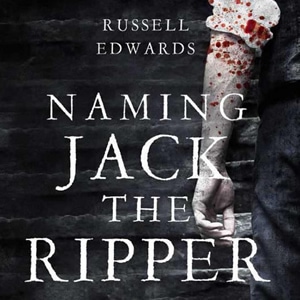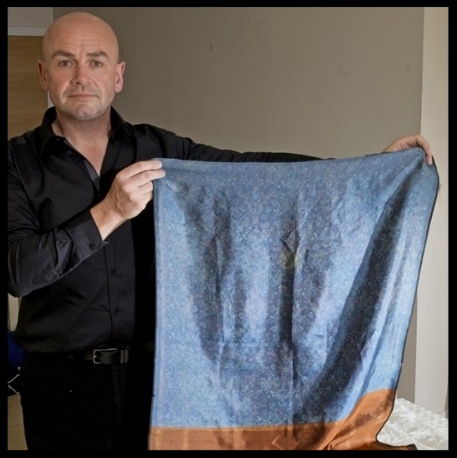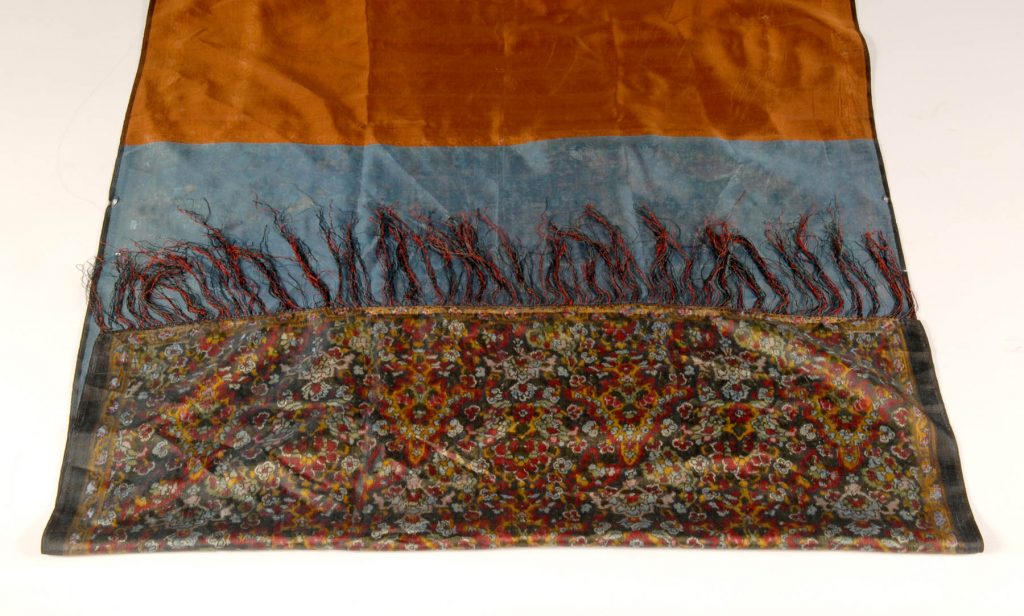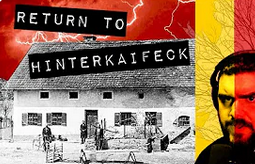
True Crime Studies: Naming Jack the Ripper by Russell Edwards
More Videos
Published
3 years agoon
By
Rachel Roth
Who was Jack the Ripper? Was it Aaron Kosminski? George Chapman? Walter Sickert? Bigfoot? Spring-Heeled Jack? There is no shortage of theories about the identity of the infamous Whitechapel ripper, and no shortage of books written about it. Unfortunately, no amount of sleuthing will ever unveil the mask because the crimes happened 133 years ago, making it kind of hard to track down a, now, very dead serial killer.
Most true crime readers already have an idea who they believe Jack is though, as do the many authors who write about him. If you pick up enough of these “unmasking” books you’ll find a lot of them share one major flaw- the inability to bend, or rather, arrogance. These authors are so positive in their theories that they’ll refuse to listen to anyone that may offer a counterpoint. Russell Edwards of Naming Jack the Ripper is no different, and it’s the one dumbbell that weighs down his otherwise compelling analysis.

Jack the Ripper, also known as the Whitechapel Murderer, and sometimes The Leather Apron, was a serial killer who murdered and mutilated an estimated number of five women in the Whitechapel district of London in 1888. The first serial killer in history to be heavily followed and obsessed over by the media, Jack the Ripper may be gone but he continues to live on in folklore, pop culture, and in the minds of millions to this day. This man who murdered five women so horribly has made himself immortal by simply remaining a mystery.
Jack’s crime spree officially started on August 31, 1888, and ended 70 days later on November 8, 1888. Only a few months forever cemented in history. It’s not at all a surprise that Jack wasn’t caught as criminal investigations back then relied almost entirely on eyewitness statements. You either had to be caught in the act or seen by someone you knew in order to be properly identified, and the Ripper case had neither of those. There was also the issue that was 1800s police work, it wasn’t exactly that professional. Ironically, this is the only reason Naming Jack the Ripper even exists because back in the 1800s, it was apparently okay for policemen to take accessories off dead bodies and gift them to their wives as Police Constable Amos Simpson did on the morning of September 30, 1888, when he allegedly took a shawl from one of the Ripper’s victims.
(By the way, Amos Simpson’s wife did not appreciate this particular gift. She took one look at that thing and said, “are you nuts? Why would I want a dead woman’s bloody scarf?!” and made him put it in the closet. I don’t actually know what he did with it but point is, she didn’t want it, so fellas, don’t be cheap. Just buy your girl a scarf.)

Naming Jack
Naming Jack the Ripper is not the best “unmasking” book out there, but it is one of the most convincing. That is something I will praise this book on, Russell Edwards is good at making you believe him.
Edwards is a Ripper fan down to his very core and he writes his “evidence” with a clear passion for the subject. You’re moved by his earnest desire to find Jack’s identity and he’s not too bad of an investigator either. Published in 2004, Naming Jack the Ripper started all from a rumor about a mysterious shawl that may or may not be a piece of evidence in one of the world’s most famous unsolved criminal cases of all time. It’s the Kentucky Fried Mouse of true crime circles.
Supposedly the shawl had belonged to Ripper victim Catherine Eddowes and that she’d been wearing it the night she was murdered. According to the story, it was removed from her body and then passed down through the family of Amos Simpson. Generations later, it was handed over to Scotland Yard’s Black Museum where it sat in a dark room until it was finally sold to Edwards at an auction.
Honestly, I’m surprised this shawl isn’t more famous. Whether or not it actually belonged to Eddowes, it’s still connected to a case so famous it has its own fandom. Despite being debunked by experts, the Ripper letters have continued to live on in importance, yet this simple shawl gets the cold shoulder.
An ominous piece of true crime history, the shawl’s shadowy presence among those who believe its story is only amplified by the dark reddish stains that defile it. If it actually did belong to Eddowes, and if she really was wearing it that night, and if those stains really are her bloodstains, then that makes the shawl the only existing piece of physical evidence regarding the Ripper case. Edwards had no doubt though. He runs hard with all these “what-ifs” and sets out to unmask the Ripper, and before the book even ends, he has his man.
“He is no longer just a suspect. We can hold him, finally, to account for his terrible deeds. My search is over: Aaron Kosminski is Jack the Ripper.”Russell Edwards, Naming Jack the Ripper
Naming Jack the Ripper goes into great detail about this mission that Edwards bestows on himself and I will say, it makes a compelling case. For one, Edwards has clearly done his research. He dives deep into the history of Jack and his victims, as well as the Whitechapel area, discussing the social issues of the time along with the economic struggles and how they possibly resulted in the birth of Jack. Even if you don’t agree with his final verdict, I suggest giving Edwards’ book a try for these sections alone. He lays out the case in a neat linear fashion and hands over every tiny detail that was available at that time.
Then comes the unraveling. He ties everything around the shawl. No matter how far he might steer away, he eventually goes back to Eddowes’s delicate fashion piece that’s older than everyone’s grandmother. It’s understandable why Edwards clings to it so desperately though, it is the whole basis for his case, and through it he offers something that most “unmasking” books do not have- DNA. This is of course, debatable, but using the shawl Edwards finds “proof” that it belonged to Eddowes and that Jack was a pervert as he apparently ejaculated on the fabric. Using these light traces of blood and sperm, Edwards matches the DNA to Aaron Kosminski who was a suspect back in 1888. The rest of the book then does what it can to connect the dots with Kosminski taking the shawl’s place as the book’s centerpiece.

Verdict
I really liked this for its persuasive power and the historical details it offers, which is what a book like this is supposed to do. It’s meant to persuade you and Naming Jack the Ripper certainly does its best. However, the riveting journey of the shawl as it’s tested for DNA and connected to numerous persons in history becomes a slog when Edwards comes bouncing back into the picture with a big, non-subtle sign that might as well say “I’m a Hero!”
If anything lowers this book’s rating for me it’s how much Edwards insert himself in the story. Naming Jack the Ripper is 10% the case, 30% the shawl, and 60% Edwards talking about himself. It takes you out of the narrative, away from the shawl, and into the Edwards home office where you can see him making a Charlie Kelly “Pepe Silvia” type conspiracy chart with a picture of the shawl pinned at the center. It reminds me of Steve Hodel’s Black Daliha Avenger where everything is somehow framed to be about the author. Edwards even connects the streets of Whitechapel to himself by recounting the years he spent walking through them as a college student having a connection with the city.
If you can ignore all that, it’s a very good read. Whether you believe everything Edwards presents, it’s hard to ignore everything he offers which in my opinion, makes this book a successful, not to mention fun, endeavor.

Related posts:
Rachel Roth is a writer who lives in South Florida. She has a degree in Writing Studies and a Certificate in Creative Writing, her work has appeared in several literary journals and anthologies. @WinterGreenRoth

You may like
Released in May of this year, You Like It Darker is the latest short story collection by Stephen King.
In the afterward King says. “You like it darker? Fine, so do I.” This sort of declaration might lead one to believe that this collection is going to be darker than his others. That we might reach depths of horror that we haven’t yet seen before, even from the King himself. This is a promise that this book does not deliver on. But that isn’t to say that You Like It Darker wasn’t still a damn fine read.
The good stories
The first story in the book, Two Talented Bastids, started everything out on the right foot. This is the story of a man named Mark. Mark looks after his father, who he lovingly calls Pop. Pop is a famous author His best friend, Butch, was a famous painter before he passed.
Everyone wants to know how two men who are lifelong friends suddenly become famous in their forties. But as far as the men in question are concerned, they’re just two talented bastids. That is, until Pop dies, and leaves a story to explain to Mark how one fateful hunting trip changed their whole lives.
Another tale I appreciated was Rattlesnakes. This is a sequel to the classic King novel, Cujo. If you haven’t read Cujo, this will spoil the ending for you. I, for instance, had not read Cujo.
Rattlesnakes is about Vic Trenton. A recent widower, he’s traveled to Florida to heal from his losses. There, he meets a lovely woman about his age (old) who appears to be not quite right in the head. She walks around around town like Delta Dawn, not with a suitcase in her hand but wheeling a twin stroller. Years ago, her twin sons were killed by rattlesnakes. And she’s never really gotten over that. So she wheels around the stroller and pretends they’re still in there. At least, everyone assumes she’s pretending.
Easily my favorite story in the book was Danny Coughlin’s Bad Dream. Imagine if you had a prophetic dream, but just one. That’s exactly what happens to Danny. He dreams of the location of a murder victim. When he goes to the location, which he’s never been to before, he finds the poor woman in question. Of course, the police find this extremely suspicious. And one detective grows so suspicious that he starts taking matters into his own hands.
The bad stories
Of course, not all the stories can be great. One that I especially disliked was Finn. This is the story of a young man with bad luck. I mean, terminally bad luck. So bad that he’s kidnapped in a case of mistaken identity.
This story just didn’t have a satisfying ending. Nor did it have a satisfying middle. There was just no real conclusion.
Another story that missed the mark was On Slide Inn Road. It’s the story of a family on a car trip to see a dying sister when they’re overtaken by some rough people outside of an old abandoned inn. This story also doesn’t seem to have any sort of cohesive storyline. It’s just the story of a family having a really bad day. It doesn’t go anywhere.
Overall, this was a collection that shows King’s patterns. He writes over and over about men who have lost their wives and their sons. Men who have survived their families and been left alone. Most of the main characters in these stories fall into that category. Perhaps in that way, these stories are darker than the ones King has written in the past. At least for him.
Fans of King’s work will love this book. I loved this book. I loved catching up with the lonely widower from Cujo. I loved meeting monsters who might or might not have crawled out of the back of a Buick. And while none of these stories were dark enough to disturb my sleep, they were good enough to keep me up reading late.

As summer approaches, there’s nothing quite like reading a book with warm campy vibes. It’s especially true if you’re lying on a sunny beach. Nicole M Wolverton’s A Misfortune of Lake Monsters matches that picture perfectly. It’s described as a creature feature with a Stranger Things-esque friend group.
Although set in modern times, I found the story felt like something out of the 80s (in a good way). Character dynamics reminded me of The Goonies and IT while the narrative combined just the right amount of adventure, romance, and horror to bring out nostalgia and comfort at the same time. Anyway, let’s dive (hehe) in!
Plot
Lemon Ziegler has one aspiration in life – to become a vet. Unfortunately, that would involve leaving her hometown, which is a problem as she is obligated to continue the family business. While such a situation is not out of the ordinary, the business itself definitely is. Lemon must impersonate Old Lucy, the town monster (a nice homage to the Loch Ness myth).
The decades-old legend about this creature swimming around in the lake is keeping tourism in the town alive. Because of this, poor Lemon has no other choice but to follow in her family’s footsteps. She keeps this secret from everyone, including her best friends, Derrin and Troy. The latter is harbouring feelings for Lemon that are stronger than friendship. As he is a teenage boy though, he is too afraid to make a move (much to Darrin’s enjoyment).
Things take an unexpected turn when a real monster shows up, hungry for blood. As one could guess in these kinds of stories, no one believes Lemon at first. This only allows the creature to claim more victims (and yes, I feel the saddest about the poor dog). Once the adults finally decide to do something, it alerts the FBI, which makes the situation more difficult for our gang. Unsurprisingly, they are the only ones who can stop the monster from wreaking move havoc.
In the midst of the riveting adventure, we also see Lemon go through a character arc. She stands up to her grandfather, allowing him to see her as an adult for the first time ever. There’s also the blossoming of her and Troy’s romance. The pair awkwardly navigate the transition from friendship to romance in an adorable way. At its heart though, this novel is about family, blood or otherwise, and how strong connections can sometimes be the only way to save your life. After all, who could defeat a multidimensional monster by themselves?
Overall thoughts
I had a blast with A Misfortune of Lake Monsters as it combined all the components of making an effective adventure story with enough heart to make you care about what happened to the characters. They are sympathetic yet entertaining and their relationships feel organic down to the dialogue that, while a tad cheesy, is oozing with charisma.
The reasons I am giving it four stars are more individualistic. I tend to go for a darker type of thriller/horror and this story, although not short of gore, ultimately steers in a more heartwarming direction. It’s something I anticipated knowing the age range and found fitting with what the narrative was going for.
I also would have liked a slightly different as I feel the story entered more of a sci-fi subgenre in the last third. While that’s fine overall, it is not my first choice of horror. Considering these things are more down to my personal preferences as a reader, I would absolutely recommend this book. I’m excited to see what the authors does next!
 (4 / 5)
(4 / 5)
Dear readers, the time has come for some answers. At least, that’s what the teaser for the new installment of Monastery says. As usual, it delivers what it promised and more as we untangle the past and its connection to the present. Without any further ado, let’s talk about it, shall we?
Plot
We start the episode with a blast from the past. Cassandra and Celeste (Nicole’s aunt and Arthur’s lover for those with short-term memory) are in the hospital because of Celeste’s pregnancy complications. Cassandra promises her former best friend that she will ruin her all the while we find out Francis’s real parentage. The picture is finally starting to come together.
As we are back in the present day, our group is more scattered than ever. Thomas is his father Walt’s prisoner while David is still running around looking for Rocky. Fred on the other hand is just looking for any place to crash, homelessness and all. Our dethroned beauty queen Nicole is hiding away from everything – including her shame. Last but not least, little Henry is spending his time taking care of Nana Beth. Guessing that is his redemption for trashing all the evidence of Albert’s murder gathered so far. Although frustrating, his actions are understandable – the poor kid is traumatized and just wants some peace.
George Turner’s murder is still an active investigation. It is obvious that this cover-up wasn’t nearly as successful as Albert’s. I sure as hell hope that Francis gets his comeuppance sooner rather than later. Not particularly because Turner didn’t deserve it but so the rest of the characters would be safe from him. Although as I’ve said before, his clear descent into sociopathic tendencies is kind of fascinating to watch.
We also get an interesting development in what so far has been a tiny background detail, which is the Monastery Werewolf. As the creature comes to visit Rocky, we find out our resident star dog considers it family. Not going to lie, it took me a few reads to understand what this means. Now I’m getting all sorts of ideas as to how the supernatural ties into the rest of the story.
Speaking of the supernatural, it is none other than Madame Witch who frees Thomas from his captivity. Well, her contribution is indirect as she sends his best friend Alfie to help instead. Although I’d say currently the two should set their dynamic status to ‘it’s complicated’. As soon as he’s free, Thomas is immediately back in his detective mode. For arguably the first time he gets some real answers as we find out the whole backstory of Albert/Celeste/Cassandra triangle. I won’t go into details as that trio deserve their own article but let’s just say it gives Cassandra a big ass motive for killing her husband. Not to mention the way she took Francis from Celeste was quite brutal to read.
We reach the lead-on for the grand finale as David and Henry are coming to free Rocky. This naturally comes with a condition – they must hand Francis the key they found during the investigation. Little do they know Nicole is already there being held at gunpoint. Oh, and Fred should also be around somewhere as he was sleeping there the night before. Thomas might be a little late to the party since he and Alfie are held a knifepoint by Rick (seems like a running theme here). Nothing good can come from this.
Overall thoughts
This episode does a perfect job of setting up the big finale. It reveals everything we need to know except the main question – who killed Albert? At this point, while it of course still matters, this story is so much more than that. It’s about all the mess that this family has got themselves into, how with each mistake they kept digging deeper, and how it took a whole new generation for all of that to come up to the surface. I can only hope our investigative gang will make it out alive…

More thoughts from the author:
1. Although a minor character in comparison, Walt strikes me as someone who’s there to represent the themes of Monastery – someone who will do horrible things in the name of family. What was your intention with his characterisation, especially considering he works for justice (aka the police?)
This is why I will always defend my decision to have a large cast, as opposed to most books – when you get even the slightest sense of fleshing out a minor character, it feels so rewarding. Walt, to me, takes the crown of “father of the year”, even if he does it by locking his son up in the bedroom. He is protecting his wife’s secret, protecting his son’s innocence, and doing so by going against his core ideals – i.e., a detective covering up a murder. He’s also based on a favourite uncle of mine, so it makes me happy to give him his moment to shine.
2. Something I thought of while writing this review – the cover up of George Turner’s murder seems to be a kind of juxtaposition as to how neatly Albert’s was since the police keep discovering evidence left and right (and how Francis doesn’t particularly seem to care). Was this intentional on your part?
It all adds up to plot convenience, and I have no shame in admitting that – Albert’s murder was so neatly covered up because I needed it to go unsolved for 14 years, whereas the reader knows who killed George, so there is no need for the cover-up to be well done.
As for Francis’ reaction to the murder, he started out anxious and paranoid after the fact, but he has grown into a state of not caring, which further depicts his descent into darkness – he knows he’s close to his goal (of finding the money and leaving his family), so there is a sense of invincibility taking over. He is stepping into his main villain energy and we are here for it!
3. Alfie has been yet another background character until now and yet he is the one who rescues Thomas. To me he seems like the friend who genuinely cares for Thomas and who gives him that reality check he sometimes needs to get out of his own head. Was that at least partially why you chose to bring him in for the grand finale?
Fun fact: Alfie was originally a series regular. However, halfway through writing the series, I realised I wasn’t using him as much as I’d wanted to, so I bumped him down to recurring. But the original plan always saw him and the other regulars coming together for the big climax, which is why he is in the fold. Alfie is someone who keeps Thomas grounded (if not humbled), since Thomas has the slight tendency to, well, think he’s better than everyone else. What’s coming up for them is one of the most exciting things I’ve ever written about.
4. Lastly, it’s not so much a question but rather a well done for how you crafted the Albert-Celeste-Cassandra dynamic! I was very invested despite knowing the outcome. Weirdly enough, while hating Cassandra for how she handled it, I sort of understood why she thought that Celeste deserved it? Either way, congrats for managing to craft these love stories in the midst of all the murdery goodness.
Thank you so much. As I’ve said before, romance is not my strong suit, but I do love a soapy triangle – and if it ends with gun violence, even better! The reveal of this mystery is probably my favourite sequence in the series so far.









